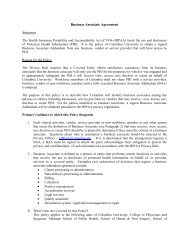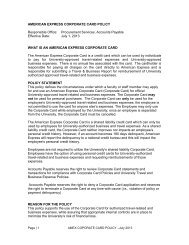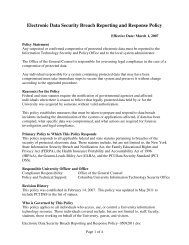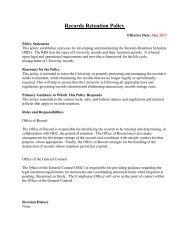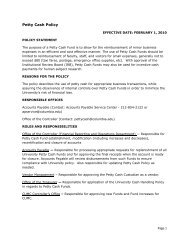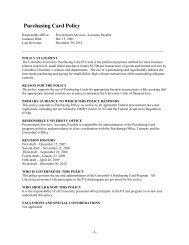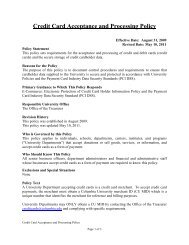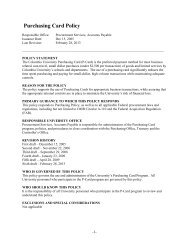Full Policy Text - Columbia University Administrative Policy Library
Full Policy Text - Columbia University Administrative Policy Library
Full Policy Text - Columbia University Administrative Policy Library
You also want an ePaper? Increase the reach of your titles
YUMPU automatically turns print PDFs into web optimized ePapers that Google loves.
D. Environmental Stewardship <br />
The <strong>Columbia</strong> Office of Environmental Stewardship provides assistance in managing recycling and reuse <br />
efforts. If you have capital equipment owned by the <strong>University</strong> that no longer serves your needs you <br />
may want to list the item(s) as available to others. For further information and guidance go to the <br />
following Website: http://www.environment.columbia.edu/ <br />
DEFINITIONS <br />
Accountable Property <br />
A term used to identify government property which is recorded in a formal accounting system and is <br />
controlled by an identification system and supporting records from its acquisition through disposal. <br />
Capital Equipment <br />
Capital equipment at <strong>Columbia</strong> <strong>University</strong> is defined as tangible, permanent item with a life of at least <br />
two years that is held for purposes other than investment or resale and has a value of $5,000. Capital <br />
equipment (also referred to in this manual as moveable equipment, property or capital assets) includes <br />
<strong>University</strong> property and government owned property. <br />
Capital Lease <br />
Leases are considered capital leases under any of the following circumstances: <br />
• Ownership transfers to lessee at end of lease <br />
• Lease contains bargain purchase option <br />
• Lease period is at least 75 percent of its useful life <br />
• Present value of lease payment is at least 90 percent of fair market value <br />
Component Parts <br />
Component parts are add-‐ons and accessories purchased after the fact that either increase the useful <br />
life of the asset or add additional functionality. Component parts are considered capital assets. <br />
Custodial Department <br />
Custodial Department includes a school, department, center, or unit of the <strong>University</strong> having physical <br />
control of <strong>University</strong> capital equipment. <br />
Depreciation <br />
Depreciation is a method for allocating the cost of buildings and equipment over time. Generally <br />
accepted accounting principles and federal regulations dictate that the value of capital assets must be <br />
written off as an expense over the useful life of the asset. Depreciation expense is calculated in e-‐Prais <br />
based on the asset’s estimated useful life. <br />
Disposition <br />
Disposition is the process of determining if capital equipment is an excess or an unusable asset. It is <br />
removed from inventory when it is no longer physically located on-‐site. Examples of asset dispositions <br />
include sale, scrap, donation, etc. <br />
E-‐Prais <br />
Proprietary asset management software used by the <strong>University</strong> to account for all moveable equipment <br />
either owned by the <strong>University</strong> or owned by the government and other sponsors. <br />
Excess Equipment




